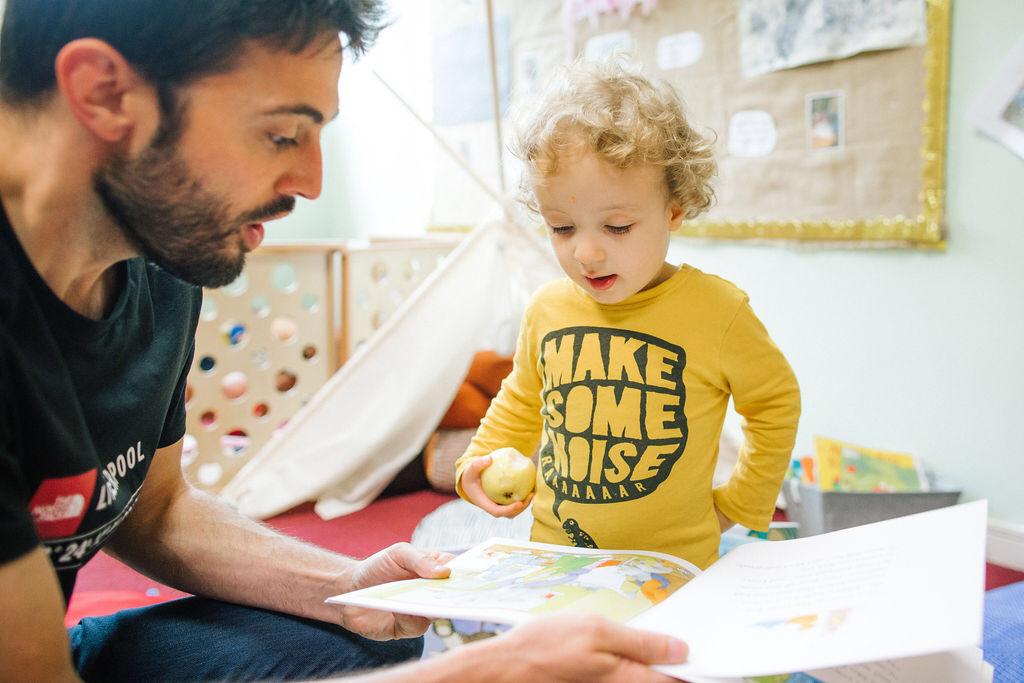
Key points:
- Effective early years provision encompasses and pays as much attention to children’s care as it does to play and learning.
- Effective provision includes planning for and reflecting on physical care events such as dressing, washing, feeding, sleeping, changing and toileting.
- Respectful caregiving requires thoughtful organisation.
- Respectful caregiving requires respectful interactions.
Being an early years practitioner means being part of a caring profession, at the core of which is caring for and about babies and young children from birth to 5 and beyond. This involves having feelings of concern, responsibility and love for children, and also engaging in nurturing behaviours — being watchful, protective and acting with care, affection and regard for children and their rights to ethical treatment. This concept of care requires that all early years professionals give careful attention to what they do, and do what is in the best interests of each child.
Effective early years provision pays as much attention to children’s care as it does to play and learning as these are intertwined and impact equally on children’s development and overall well-being.
Care includes emotional aspects, relationships, and also physical interactions. How practitioners touch and physically interact with children and how they organise to meet children’s physical care needs are therefore central to early years pedagogy. Although this may apply most directly to practitioners working with our youngest children, practitioners working with older children, including those with special needs, also need to ensure that all physical interactions impart kindness and respect.
Babies and young children first come to understand themselves through their bodies and understand much of what others think of them and how much they are loved and valued through touch and physical interactions. Non-verbal communications are internalised into children’s developing sense of self and shape their behaviours, actions and attitudes towards others. Practitioners must pay attention to their own physical gestures and facial expressions to ensure that they hold, touch and handle babies and young children gently, sensitively and with respect. This will give children a sense of being recognised, understood and valued.
Effective provision includes reflecting on and planning for physical care events such as dressing, washing, feeding, sleeping, changing and toileting, as well as children’s play and learning. Settings should ensure physical caregiving is given sufficient time and thought to create situations that are valuable and enjoyable for both child and practitioner.
Physical care events are precious times when the practitioner is one-to-one with a child, with many opportunities for supporting a child’s positive sense of self and wellbeing through focused interaction and attentive care, building secure, trusting, relationships which help babies and young children to feel confident to explore and play. These are also times for learning, with rich opportunities for focused attention, sustained conversations and for repeating and recalling experiences, which are essential elements for practising cognitive processes that support learning overall.
Respectful caregiving requires thoughtful organisation. For consistency and continuity, the key person should undertake the physical care of their key children, and for times when the primary key person is away a secondary key person or “buddy” system should be implemented.
- Organise for predictability and flexibility: prioritising physical caregiving means planning for a balance between having familiar, predictable times of day and the flexibility to be responsive to children as they require.
- Organise for individualised care within a group routine: a balance needs to be struck between caring for the whole group and caring for individual children. Practices that treat children as if they have identical needs do not support children’s positive self-concept or sense of autonomy. For our youngest children, individual routine and care sequences that reflect their home experiences should be followed where possible and advisable, to provide continuity and connect with the home.
- Organise the environment and resources: a care environment should contribute to the practical effectiveness of the practitioner through its layout and resourcing, and enable the child to feel safe, comfortable and capable, and able to influence what happens.
Respectful caregiving requires respectful interactions. In a respectful caregiving approach, the practitioner recognises the child as a free and equal human being, with whom they are working in co-operative partnership. The adult does everything with the child rather than to the child, so care events become co-operative dialogues in which the child feels competent, recognised and valued as an individual. Practitioners should keep in mind that this is time for building trusting relationships with a child and for positively supporting their developing self-concept.
This can be achieved by:
- paying attention to body language, voice tone, touch and gesture, remembering the messages that each of these will convey to the child and how they will make the child feel
- giving full attention to the child, observing and responding to all their communications and following their cues
- slowing down: if care is going to be truly participatory and respectful, it needs to be unhurried
- inviting and suggesting: offering explanations and reassurance; being patient and giving the child time to respond and participate
- adapting your approach, actions and gestures according to the individual child’s responses, needs and preferences
- encouraging co-operation and participation through inviting the child to take part, asking permission and letting them know what is intended before taking action, creating opportunities for the child to do things for themselves, giving the child manageable choice and allowing for autonomy of movement.
Previous page: Play | Next page: Quality improvement and leadership
